

Exploring our past to sort out myth from reality
Share this Page on
Facebook or Twitter

These are the voyages of the TimeShip Anachron.
Our Mission: To boldly explore the past, dispelling
mythinformation and mythconceptions
of American History along the way.
 Visit us on Facebook
Visit us on Facebook
Meet MythAmerica LITE
Get Down and Googie!
If you are an American older than 40, you realize that we Americans used to be confident we knew what the future looked like. If we could afford it, we piled the family in the station wagon and headed out to Anaheim, California, and visited our future in Tomorrowland at Disneyland after it opened in 1955.
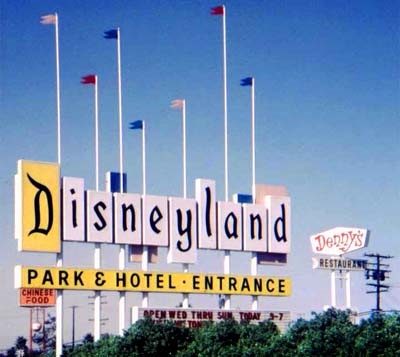
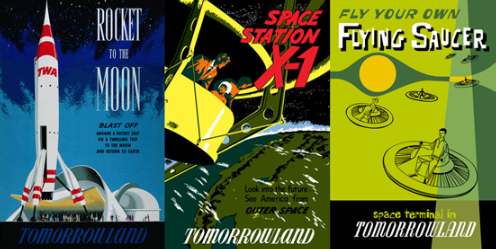
If we couldn’t afford that, we piled the family in the wagon and headed out much closer. Because the future lurked around every corner in our own county. Wherever there was a Googie diner, motel, gas station, or bowling alley, they screamed, “Welcome to the future!” to us.
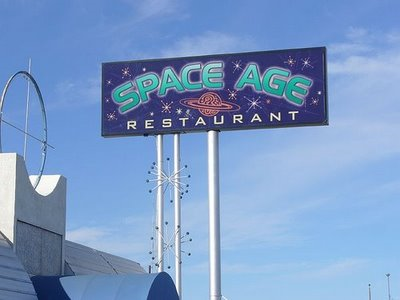
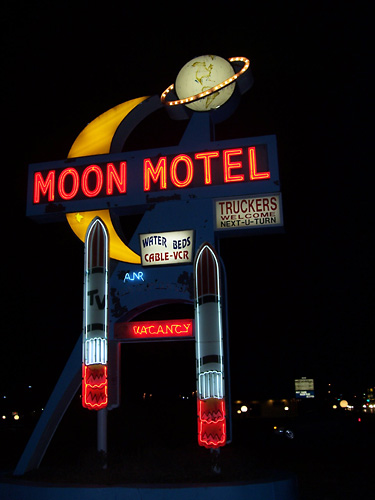
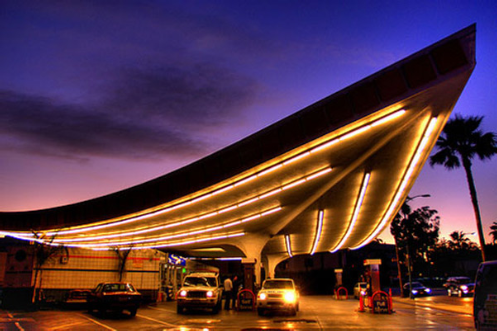
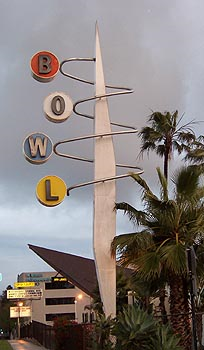
What is “Googie,” you may ask?
You may not know the word, but unless you’ve lived in a cave for the last 60 years you’ve seen it. It’s the style of architecture and “signage” that grew out of the early Space Age dreaming of Americans, and flourished from the late 1940s to the mid-
High-
Googie architecture was born of the post-
For decades, many "serious" architects decried Googie as frivolous or crass. But today we recognize how perfectly its form followed its function.
Even as the best historic examples are bulldozed, architects are rediscovering the importance and utility of Googie and are adopting it for their own designs.
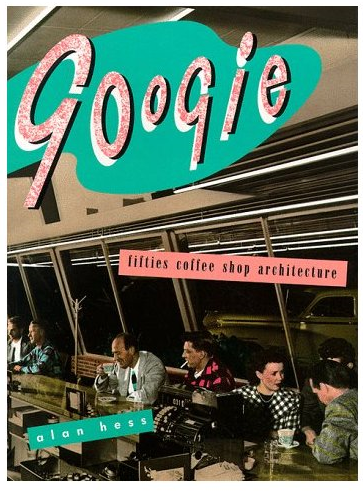
Alan Hess, the author of Googie: Fifties Coffeeshop Architecture, traces Googie back to three Coffee Dan's restaurants designed by John Lautner in the early forties.
"He selected the vaults and glass walls and trusses and angles of his buildings to fit the original, often unusual, concepts of space he favored," writes Hess.
Lautner originated the style that would be refined and reinterpreted by many others. Unintentionally, he also gave the style a name when, in 1949, he designed Googie's coffee shop at the corner of Sunset Boulevard and Crescent Heights in Los Angeles.
Professor Douglas Haskell of Yale was driving through Los Angeles when he and architectural photographer Julius Shulman came upon Googie's. "Stop the car!" Haskell yelled. "This is Googie architecture." While Haskell was dubious about the style, he made the name "Googie architecture" stick by using it in a 1952 article in House and Home magazine. Unfortunately, the term soon came to be a slur in "serious" architectural circles.
As the SpaceAgeCity website quoted above puts it:
Like obscenity, Googie is hard to define, but we know it when we see it.
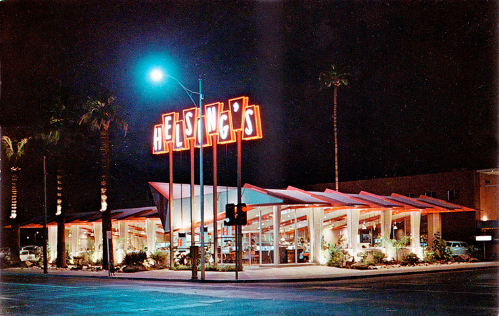
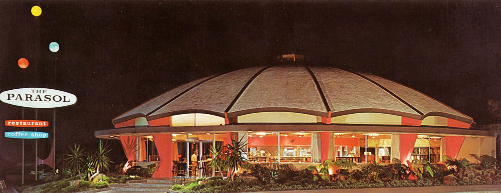
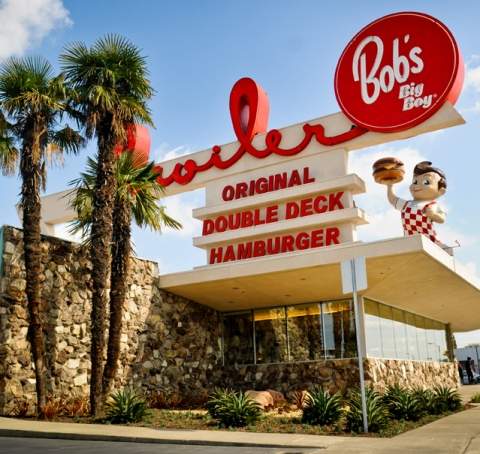
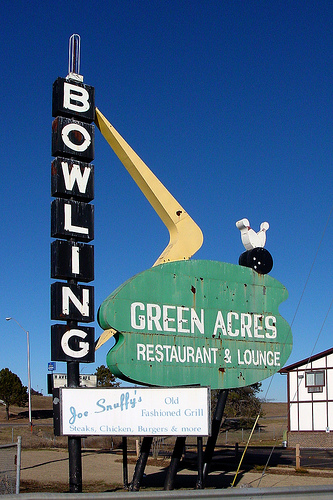
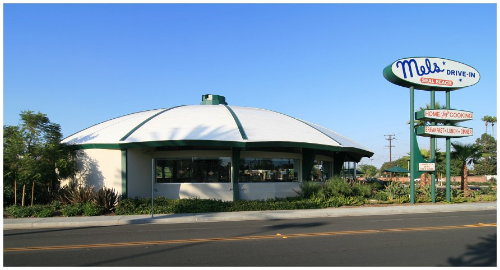
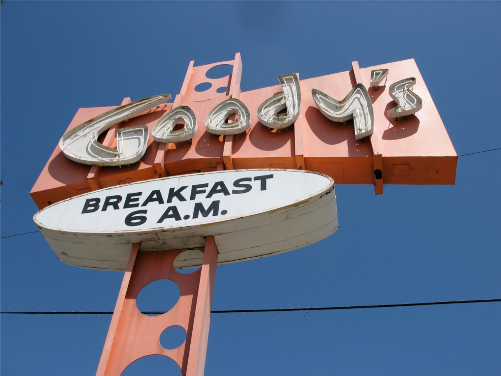
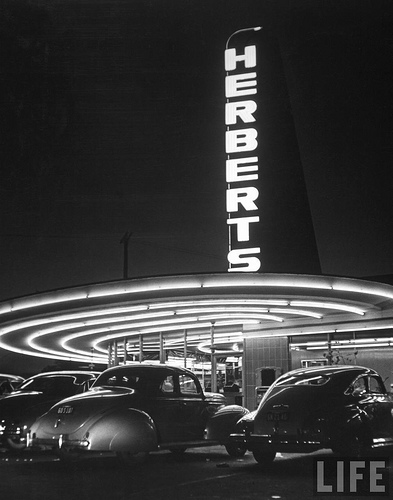
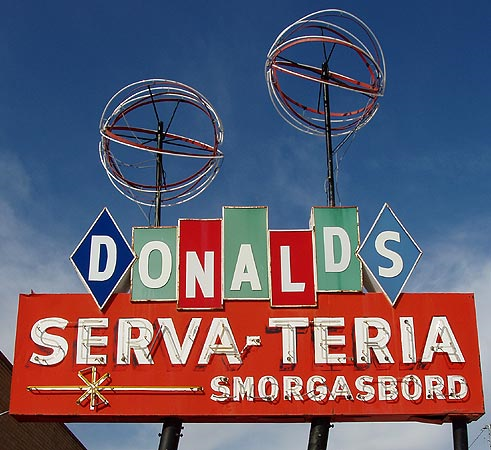
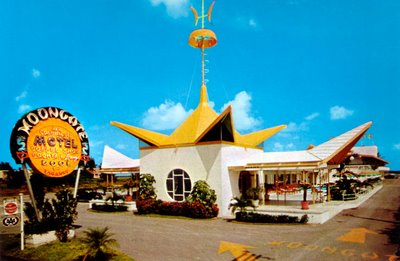
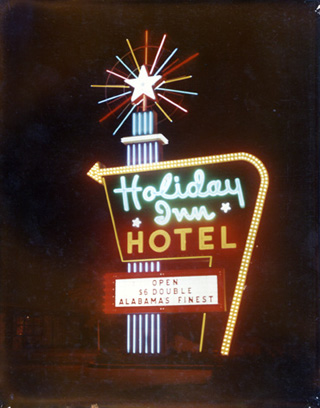
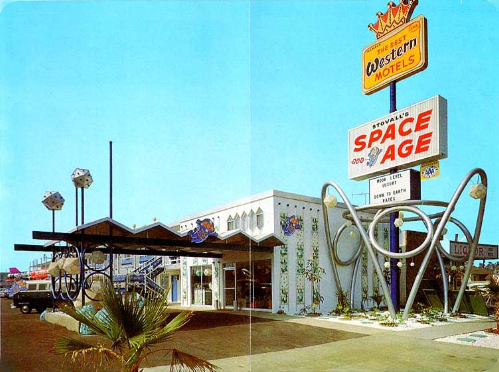
For those who find such things fascinating, the website goes into extensive detail on some of the more common elements of the style, which include upswept roofs; large domes (often of concrete) looking like space stations and outer-
Although Googie buildings were often quite different from one another, Douglas Haskell noted that the style had certain rules:
1. It can look organic, but it must be abstract. "If it looks like a bird, it must be a geometric bird. It's better yet if the house had more than one theme: like an abstract mushroom surmounted by an abstract bird."
2. Ignore gravity altogether. "Whenever possible, the building must hang from the sky."
3. Multiple structural elements. Inclusion is the rule, rather than minimalism.
New materials, including sheet glass, glass blocks, asbestos, plywood and plastic gave the architect a whole new palette to work with. Other innovations allowed steel and cement to be used in new ways. Suddenly, architects had more elbowroom for their dreams. A room made of plastic could look like a log cabin, a space ship, or almost anything.
As another website put it, Googie architecture and signs often remind you of a mash-
For a time in the 1960s, it wasn’t even all that uncommon to be able to enjoy Googie every day of the week … for there were even Googie churches.
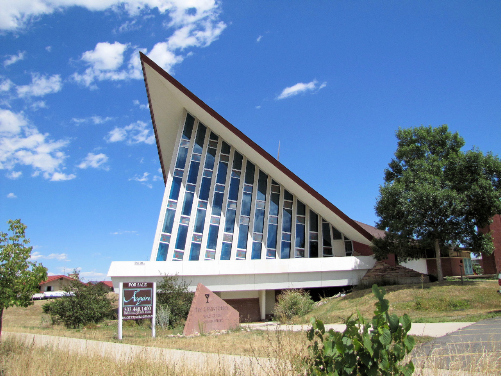
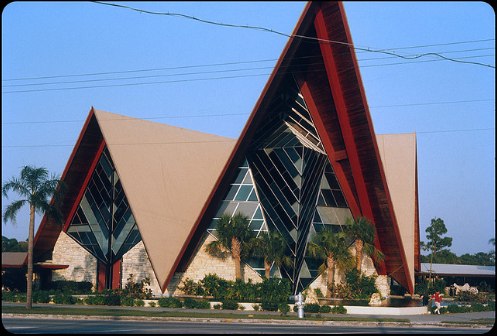
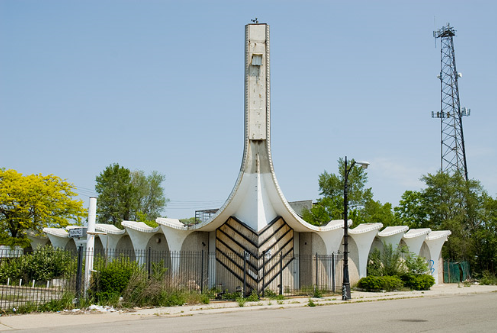
There are a few spots around America where Googie architecture has been restored to its former glory, and a few architects who are googifying their new structures. There is even a movement to add Googie buildings to efforts to recognize and preserve certain historic architecture in America. In 2009 the Bastien’s Steak House restaurant in Denver shown below was listed on the National Register of Historic Places.
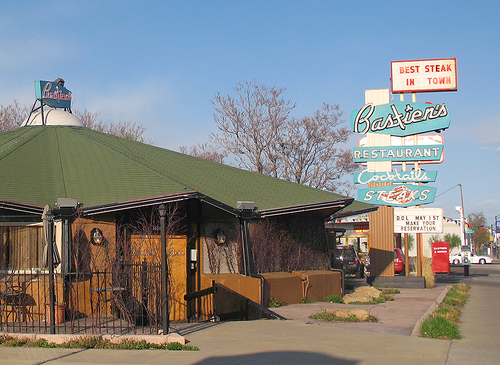
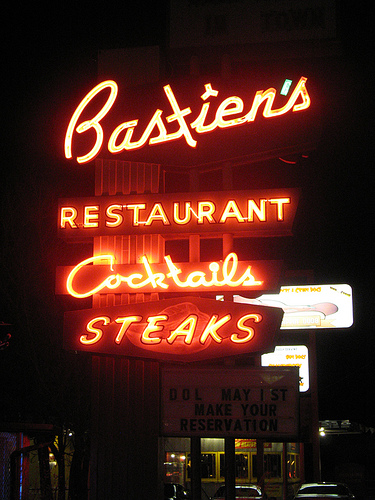
And the site of the most extensive and impressive efforts at Googie Preservation is probably the Wildwoods Shore Resort Historic District in New Jersey:
The Wildwoods Shore Resort Historic District, or Doo Wop Motel District, is an area in The Wildwoods, New Jersey, that was home to over 300 motels built during the Doo-
The motels are very stylized, with Vegas-
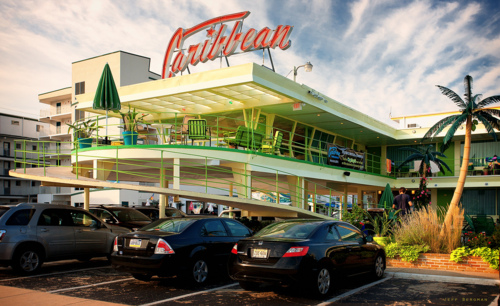
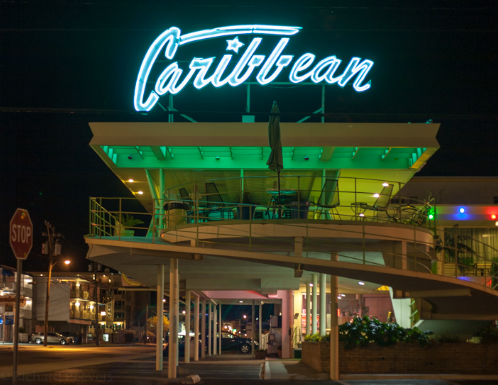
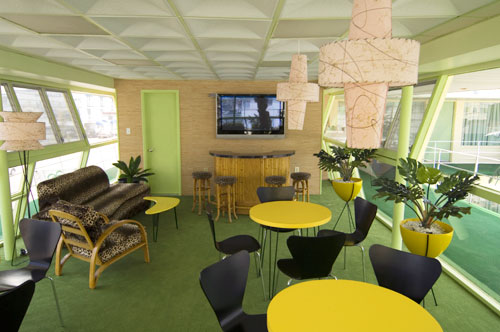
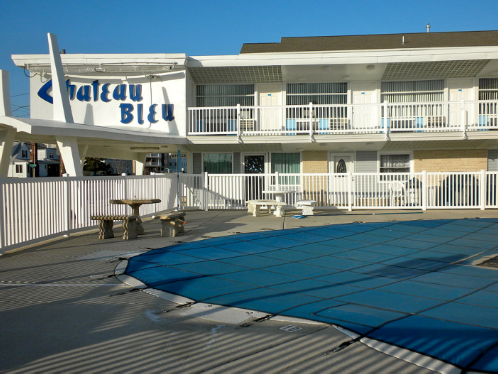
A 1950s Doo Wop museum has recently been built which contains property from demolished motels such as neon signs and furniture.
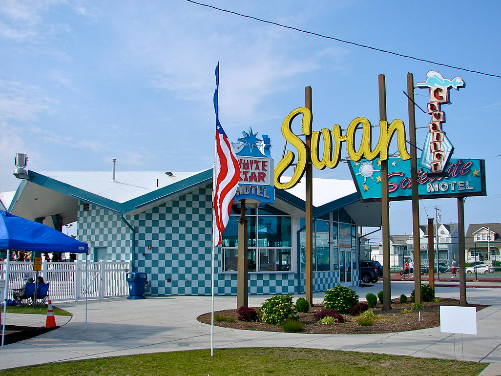
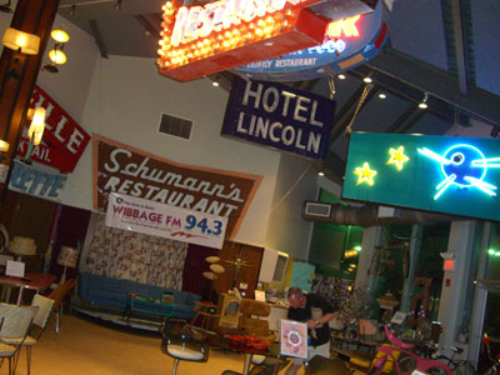
Neo-
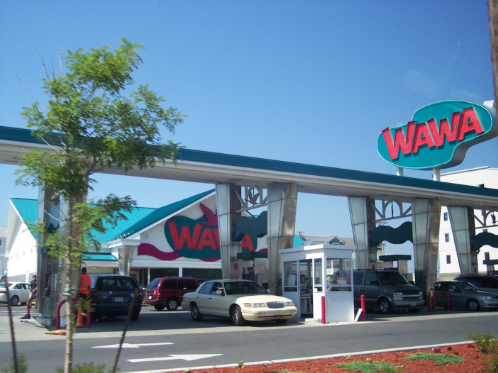
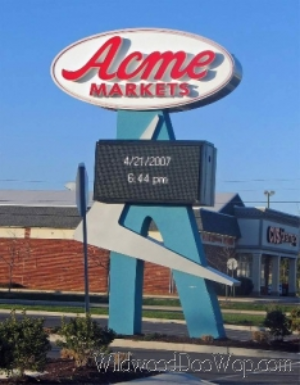
There are lots more classic motels in Wildwoods.
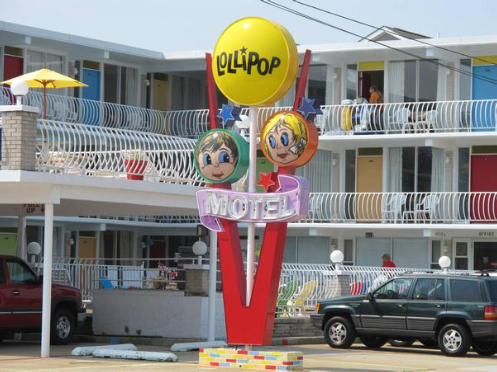
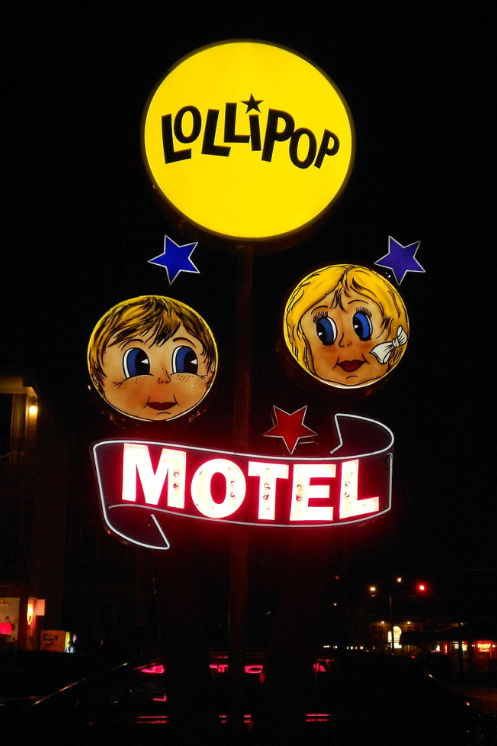
But in general across the USA, the old Satellite motels and bowling alleys and their relatives are all fast fading.
Today, the familiar boomerang arches, tapered columns, cantilevers, parabolas and curved domes are being bulldozed at an alarming rate. These buildings stand at an unfortunate juncture: Not new enough to look modern, yet not old enough to be considered historically significant. As the best examples of the genre disappear, we are losing not only part of our history, but also the last reminders of our shared dream of a shining future in a better world.
But they live on in photo-
All you need to do is Google “Googie”!-
Or check out the scores of Googie postcards and photos on the Meet MythAmerica "Googie Architecture and Roadside Culture" Pinterest board.